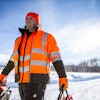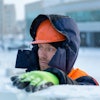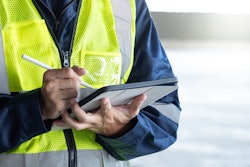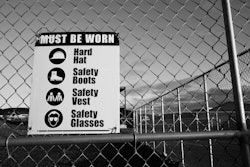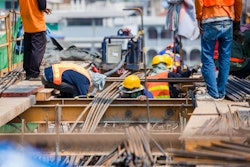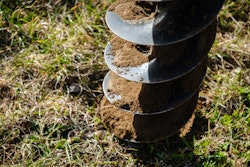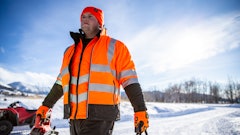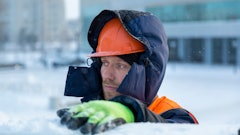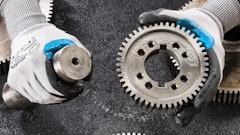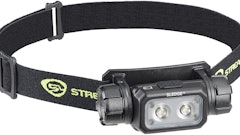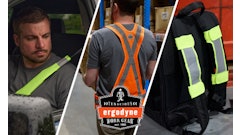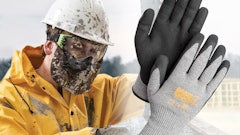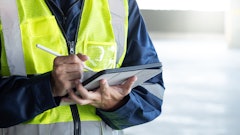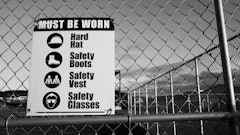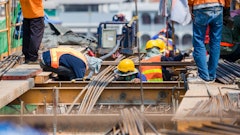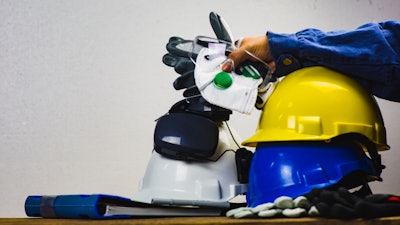
On any jobsite, personal protective equipment (PPE) does more than meet a checklist — it’s the barrier between everyday hazards and serious injury. Whether it’s falling debris, excessive noise, or airborne dust, each piece of PPE plays a specific role in keeping contractors safe and productive on the job.
Here’s a closer look at some of the most essential PPE and the hazards they help defend against.
1. Hard Hats: Your First Defense Against Impact and Overhead Hazards
A quality hard hat protects against falling objects, low-hanging materials, and even electrical hazards. Options like Milwaukee’s safety-rated hard hats are designed for both comfort and jobsite durability, often including adjustable suspension systems and compatibility with lights or ear protection. Whether you're working in a trench or under steel, keeping your head covered is non-negotiable.
2. Steel-Toed Boots: The Foundation of Foot Protection
Foot injuries — from crushed toes to punctures — remain one of the most common jobsite incidents. Boots with steel or composite toe caps and puncture-resistant soles are key. Brands like Ariat offer rugged work boots with additional benefits like slip resistance and shock absorption, helping reduce both injury risk and long-term fatigue.
3. Safety Goggles: Guarding Against Dust, Debris and Splashes
Eye injuries are often preventable with the right protection. For grinding, cutting, and demolition tasks, a good seal makes all the difference. Products like the Bollé Universal Safety Goggles offer a wide field of vision and compatibility with other PPE, while protecting against both impact and chemical exposure.
4. Ear Protection: Blocking Out Jobsite Hearing Loss
High-decibel environments — like those involving jackhammers, saws or heavy equipment — can lead to permanent hearing damage over time. Molded ear plugs, such as those from ZenPlugs, are designed for a comfortable, customized fit while meeting industrial noise protection standards.
5. Gloves: The Right Fit for Cut, Heat and Chemical Protection
Not all gloves are created equal. Whether you're pouring concrete, handling rebar, or working with solvents, the right glove — cut-resistant, heat-insulating or chemical-proof — protects against serious injuries to one of your most vital tools: your hands.
6. High-Vis Gear: Be Seen to Stay Safe
Especially around moving equipment or in low-light conditions, visibility can mean the difference between a near miss and a life-changing injury. ANSI-rated hi-vis vests and jackets make workers stand out in chaotic, dynamic environments, alerting others to their presence.
7. Respiratory Protection: Defending Against the Invisible
Silica dust, fumes and mold may not be visible, but they’re just as dangerous. Depending on exposure, workers may need anything from an N95 mask to a full-face respirator. Long-term lung health should never be an afterthought.
The Real Value of PPE
Ultimately, PPE is about protection — not just from injury, but from costly downtime, lost wages, and long-term health risks. When chosen correctly and worn consistently, PPE becomes more than gear — it’s a critical part of a culture of safety.
From molded ear plugs to impact-rated helmets, today’s safety gear continues to evolve. But no matter how advanced it gets, it only works if it’s used. That responsibility lies with both employers and the workers themselves.
Stay Ahead of Safety
Ultimately, PPE is about protection — not just from injury, but from costly downtime, lost wages and long-term health risks. When chosen correctly and worn consistently, PPE becomes more than just jobsite gear.
But PPE isn’t effective in isolation. Even the most advanced safety equipment won’t protect a worker who isn’t trained to use it or who chooses not to wear it. That’s why building a strong PPE program means going beyond procurement. It requires education, enforcement, and a shared commitment to safety from leadership down to every crew member.
On a well-run jobsite, safety isn’t just a policy — it’s a mindset.

